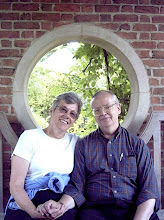Jñana-yoga
The indispensibility of knowledge for a full spirituality — if not for each individual, at least for the tradition as a whole — is negatively demonstrated by those teachings and movements which generate unintelligible and ineffectual behavior. As Radhakrishnan, a highly intellectual exponent of Hinduism, has aptly remarked: "If we believe absurdities, we shall commit atrocities." [Eastern Religions and Western Thought (1959), p. 80] As knowledge stripped of its experiential moorings deteriorates to scholasticism, spiritual experience devoid of an intellectual base can exhibit the coherence and lack of self-criticism characteristic of many current religious trends. Jñana-yoga, the discipline of knowledge leading to spiritual growth, calls for a philosophical analysis of experience, concepts, and assumptions. More significantly, however, jñana-yoga is the process by which knowledge itself is harnessed for the seeker's own spiritual realization. According to the ideal of jñana-yoga — as for example, in the Upanisads and the Gita, and generally throughout the Hindu tradition — knowledge is an instrument of spirituality. Specifically, the way of knowledge includes the following demands on the aspirant:
(a) ability to discern reality and truth from appearances
(b) receptivity to deeper sources of insight
(c) longing for freedom or liberation (moksa)
(d) freedom from ignoble motives (reputation; wealth)
(e) nonattachment to the fruits of one's search
(f) discipline for the achievement of physical and mental control
(g) meditation
— From "Indian Spirituality in the West: A Bibliographical Mapping," Robert A. McDermott, in Philosophy East and West (Journal), April 1974, p. 222.
Chaos, they contend, has become the century's third great revolution in the physical sciences. Like the first two revolutions, chaos cuts away at the tenets of Newton's physics. As one physicist put it: "Relativity eliminated the Newtonian illusion of absolute space and time; quantum theory eliminated the Newtonian dream of a controllable measurement process; and chaos eliminates the Laplacian fantasy of deterministic predictability." Of the three, the revolution in chaos applies to the universe we see and touch, to objects at human scale.
— James Gleick, Chaos, p. 6.
Clouds are not spheres, Mandelbrot is fond of saying.Mountains are not cones. Lightning does not travel in a straight line. The new geometry mirrors a universe that is rough, not rounded, scabrous, not smooth. It is a geometry of the pitted, pocked, and broken up, the twisted, tangled, and intertwined. The understanding of nature's complexity awaited a suspicion that complexity was not just random, not just accident. It required a faith that the interesting feature of a lightning bolt's path, for example, was not its direction, but rather the distribution of zigs and zags. Mandelbrot's work made a claim about the world, and the claim was that such odd shapes carry meaning. the pits and tangles are more than blemishes distorting the classic shapes of Euclidian geometry. They are often the keys to the essence of a thing.
— James Gleick, Ibid., p. 94.
Somehow, after all, as the universe ebbs toward its final equilibrium in the featureless heat bath of maximum entropy it manages to create interesting structures. Thouughtful physicists concerned with the workings of thermodynamics realize how disturbing is the question of, as one put it, "how a purposeless flow of energy can wash life and consciousness into the world." Compounding the trouble is the slippery notion of entropy, reasonably well-defined for thermodynamic purposes in terms of heat and temperature, but devilishly hard to pin down as a measure of disorder. Physicists have trouble enough measuring the degree of order in water, forming crystalline structures in the transition to ice, energy bleeding away all the while. But thermodynamic entropy fails miserably as a measure of the changing degree of form and formlessness in the creation of amino acids, of microorganisms, of self-reproducing plants and animals, of complex information systems like the brain. Certainly these evolving islands of order must obey the Second Law. The important laws, the creative laws, lie elsewhere.
— James Gleick, Ibid., p. 308.
Subscribe to:
Post Comments (Atom)

No comments:
Post a Comment